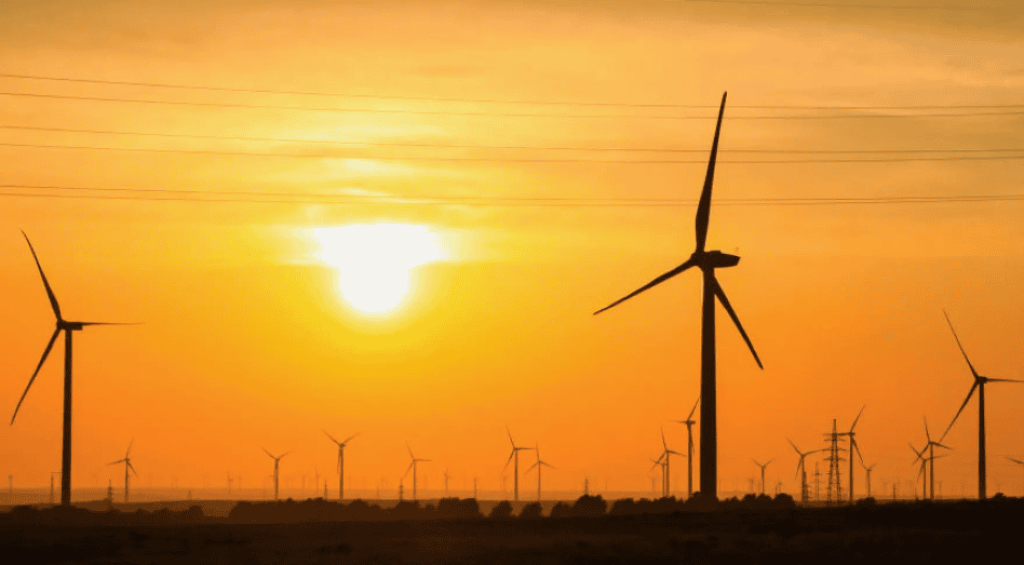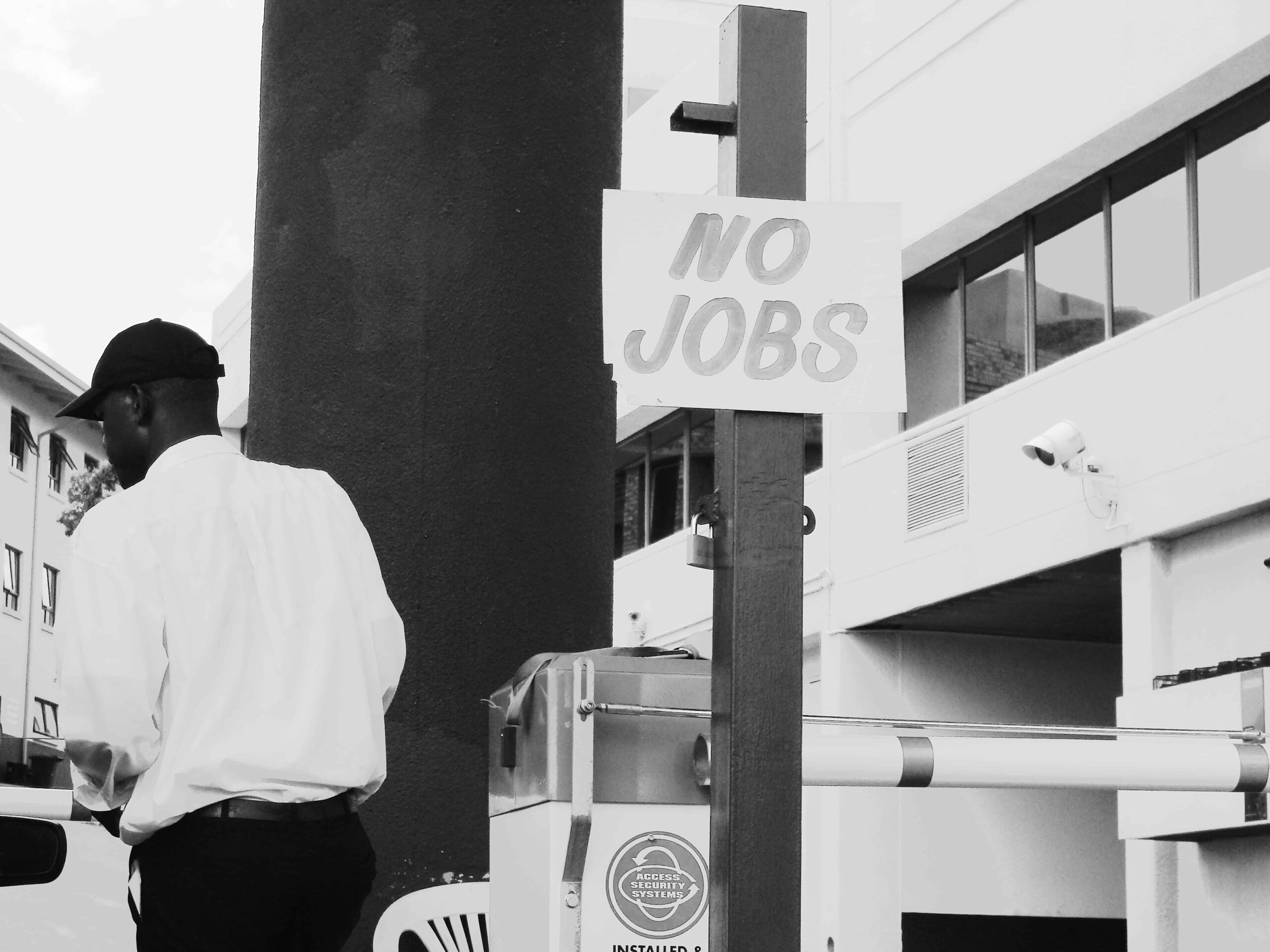Executive summary
The European Commission has recommended that the European Union should cut greenhouse gas emissions by 90 percent by 2040 compared to 1990. Modelling shows that this target is feasible technically and is in line with social acceptability and global fairness objectives. Achieving it will require massive expansion of renewable electricity generation, drastic reductions in fossil-fuel use, energy efficiency measures and deep electrification of end-use sectors.
Technological advances and strong policies have already enabled the EU to start this transformation and make substantial progress on parts of it. Most technologies required to achieve the emissions-reduction targets are market-proven, and in many cases are
cost-competitive with or cheaper than fossil alternatives. After decades of successful innovation, clean-technology deployment is accelerating, with costs of key clean technologies continuing to drop rapidly.
Nevertheless, economic, social and political risks threaten ambitious climate policies. The four main risk categories are: geoeconomic instability, technological progress, exacerbated inequality and policy credibility. A global economy with more trade disputes and greater risk of conflict endangers the massive capital investment needed for the transition, while the cost of clean technologies is a primary determinant of the economic viability of decarbonisation. Climate policies will affect people’s everyday lives in disruptive ways, meaning that regressive outcomes must be guarded against, balanced with a concrete commitment to the established climate policy pillars.
To succeed, the 2040 climate and energy policy framework needs to be designed to be resilient to such risks. The EU should put distributional issues at the heart of its climate policy, develop an emissions-reduction strategy that monitors geoeconomic and technological risk factors, and put in place contingency plans to manage the impact of negative outcomes and to maximise the societal, economic and environmental co-benefits of the energy transition.
The authors would like to thank Giovanni Sgaravatti, Georg Zachmann, Panagiotis Fragkos and Massimo Tavoni for their comments on earlier versions of this paper.
1 Europe’s climate ambitions
Under the 2021 European Climate Law (Regulation (EU) 2021/1119), the European Union is required to establish a binding climate target for 2040 as an intermediate goal between the 2030 target of a 55 percent emissions reduction (compared to 1990) and the goal of net-zero emissions by 2050. In February 2024, the European Commission recommended that the 2040 target should be a 90 percent emissions reduction compared to 1990 levels (Figure 1; European Commission, 2024). This goal is aligned with the recommendations of the European Scientific Advisory Board on Climate Change, which analysed the scientific evidence against criteria including global fairness, technological feasibility and social acceptability, and determined an appropriate range for the 2040 emissions reduction target of between 90-95 percent (ESABCC, 2023).
Figure 1: EU27 historical greenhouse gas emissions and emission reduction targets

Source: Bruegel based on European Environment Agency and European Commission.
The 2040 target is not yet law, but if it is adopted, it would mean almost full decarbonisation of the EU economy within two decades. This would signal continued commitment to European decarbonisation, focusing the efforts of policymakers, industry, investors and civil society.
Consistent, credible policy targets increase investor trust and can create a foundation for the associated climate and energy policy framework that the European Commission would have to put in place during its next five-year term.
The European Commission’s impact assessment demonstrates in principle the technical feasibility of securing a 90 percent emissions reduction by 2040 (European Commission, 2024). Nevertheless, several economic, technological, social and political risks lay ahead and could jeopardise the goal of carbon neutrality. In an unstable world, the EU must develop a resilient 2040 climate and energy policy framework that will ensure the energy transition remains viable in a range of future scenarios.
In this Policy Brief, we discuss Europe’s emission mitigation strategy, set out four risks that could derail progress towards the 2040 target and make recommendations to address each one.
While our assessment 1 of energy transition feasibility and our categorisation of risks are selective, we offer a structured framework for considering the resilience of energy and climate policy in an evolving and unstable global environment.
Section 2 illustrates that the energy transition is already underway in Europe, providing a foundation for discussion of the future risks. Section 3 covers the essential elements of the EU’s projected decarbonisation strategy. As a check on the results of the European Commission’s impact assessment on the proposed 2040 target, it uses REMIND, a tool for modelling future economic developments with a focus on energy and implications for the changing climate (see footnote 1). European Commission (2024) and REMIND modelling are broadly in line. Section 4, based on the decarbonisation pathway set out in the previous section, discusses the risks that could hold up deeper emissions cuts. Section 5 concludes with recommendations on pursuing a resilient climate and energy policy framework.
2 The dawn of Europe’s energy transition
The EU is in the early stages of a comprehensive transformation to climate neutrality, driven by European and national policies and substantial investment in renewable energy, energy efficiency and sustainable technologies. Stringent emissions targets, an expanding emissions trading system (ETS), substantial funding for green projects, the adoption of strong policies on energy efficiency and renewable energy expansion, and a shift towards circular-economy principles are all steering the region towards a more sustainable, climate-neutral future.
Policies implemented over the last 15 years, such as the EU ETS, have begun to pay off. Overall emissions in 2022 were 33 percent lower than in 1990 2 , with a substantial further 8 per- cent drop in CO2 emissions in 2023, according to initial data (CREA, 2024). In the ETS sectors (mainly power generation and heavy industry), emissions in 2023 were 47 percent lower than in 2005 3 . The contribution of wind and solar energy to electricity is increasing exponentially, while key clean technologies including electric vehicles and heat pumps are being sold in larger volumes (Figure 2).
As a consequence of dedicated support policies and technological advancements, the EU has seen a significant upscaling of renewables. Wind and solar power have become economi- cally viable and are now the preferred choice for new energy investments. In terms of electricity produced, they now cost far less than new fossil-fuel or nuclear generation, while providing energy security and health benefits (Figure 3). As a consequence, EU power-sector emissions reduced by a record amount in 2023, nearly halving since their peak in 2007 (Ember, 2024).
Figure 2: The deployment of key clean technologies is underway

Source: Bruegel. Note: 2023 heat pump sales data is estimated based on the European Heat Pump Association’s available market data. The dashed arrows are extrapolations based on recent trends.
Figure 3: Wind and solar electricity generation costs are falling at unprecedented rates

Source: Bruegel based on Bloomberg and Way et al (2022). Note: solid lines represent global average and dashed lines represent EU average. The dark green EU cost range indicates the cost of solar PV or onshore wind plus battery storage.
Other economic sectors are also starting to transform. The 2022 gas price spike resulting from Russia’s curtailment of gas exports to the EU has given heat pump sales and investments in heat pump factories a substantial boost (although heat pump sales declined in 2023 4 ). Similarly, the adoption of CO2 emission standards for passenger cars helped the share of battery-electric vehicles in car sales increase markedly from 2020. Tighter stand- ards that will come into effect in 2025 and 2030, and the eventual zero emissions standard in 2035, in combination with substantial technological progress and very strong support for e-mobility in China, have led most car makers to change their strategies and investments. Many brands now aim for almost full battery-electric sales in Europe in the early 2030s 5 .
The EU has also at least partially caught up with China in the manufacturing and deployment of batteries. The EU currently has substantial cell-manufacturing capacity relative to annual demand, and planned projects should ensure that Europe continues to retain the capacity to meet most of its final electric vehicle battery demand (Tagliapietra et al, 2024). The EU is not a leader in this field but still manages to capture a small share of the battery manufacturing market. However, the EU lacks production capacity for earlier stages of the battery value chain, such as lithium refining, and planned projects remain surrounded by a large degree of uncertainty. China remains the global leader in these markets.
3 The 2040 goal
The energy system transformation pathway up to 2040 foreseen by the European Commission (2024) would involve a huge scale-up of wind and solar generation to provide clean electric- ity, and deep electrification of energy services including heating and transport to make use of the clean power for consumer needs. This would lead to a rapid phase-down of fossil-fuel usage, reducing greenhouse gas emissions 6 .
The most important result from the European energy transition will be drastically reduced of fossil-fuel consumption. To achieve 90 percent emissions reductions by 2040, European Commission modelling shows a 75 percent reduction in fossil fuels in primary energy compared to 2019 (Figure 4). For comparison purposes, Figure 4 and subsequent figures also show results of modelling using REMIND (see footnote 1).
Figure 4: Scenarios for primary energy demand evolution

Source: Bruegel based on REMIND modelling results and European Commission (2024). Note: The European Commission bar refers to scenario 3 (S3) in the impact assessment (European Commission, 2024), which delivers a 92 percent emissions reduction in 2040 relative to 1990. For REMIND, see footnote 1.
It should be noted that even with continually rising living standards and the provision of more, better energy services, clean energy does not need to replace the full amount of primary energy currently provided by fossil fuels. This is principally because electricity is a far more efficient energy carrier than solid or liquid fuels, so there are substantially lower losses along the conversion chain from primary energy supply to useful energy demand. Therefore, to deliver the same energy services, much less electricity than fossil fuels is needed. Some oil and fossil gas would remain through 2040 to supply energy to hard-to-electrify sectors including chemicals, heavy-duty vehicles, aviation and shipping (European Commission, 2024).
Delivering the huge expansion of wind and solar electricity generation up to 2040 might seem challenging at first glance, but the required annual deployment to deliver massive energy supply from these sources by the end of the decade needs to increase only slightly from current rates. An acceleration of wind and solar deployment might be efficient if the cost of these technologies continues to fall as observed in previous decades (Figure 5).
Figure 5: Scenarios for wind and solar energy supply

Source: REMIND modelling scenarios and European Commission (2024). Note: for REMIND, see footnote 1.
The surge in clean electricity from wind and solar can displace fossil fuels in the wider economy, including oil in transportation and gas in heating, through the electrification of end-use sectors, making use of clean technologies like EVs and heat pumps. The European Commission (2024) impact assessment projects electrification in 2040 (defined as the percentage of electricity in final energy demand) at 50 percent (Figure 6). Electrification is then projected to reach above 60 percent by 2050, emphasising the central role of electricity in the clean-energy economy of the future.
Figure 6: Electricity will become the dominant energy carrier

Source: Bruegel based on REMIND and European Commission (2024). Note: for REMIND, see footnote 1.
The required investment for the energy transition is already being deployed and the theoretical overall decarbonisation pathway to net-zero emissions is clear. However, the techno-economic modelling and the initial phases of clean technology deployment do not take account of four main categories of risk that face the energy transition: geoeconomic, technological, distributional and credibility-related. We discuss these in the next section.
4 Four risks to 90 percent decarbonisation by 2040
4.1 Risk 1: geoeconomic instability
Achieving Europe’s 2040 emissions reduction target depends largely on substituting ongoing fossil-fuel expenditure with capital investment in clean technologies (Pisani-Ferry and Mahfouz, 2023). The scale is huge but not prohibitive: annual energy system investment needs would be approximately €700 billion from 2031-2040 to meet the 90 percent target (roughly 3 percent of EU GDP) (European Commission, 2024).
However, the geoeconomic context is less certain than 2019, when the European Green Deal was set out. Geostrategic conflicts directly affect European security and the continent is still managing the aftermath of a global pandemic and an energy crisis. The European energy transition could be hampered by geoeconomic risk through direct disruption of clean technology supply chains and broader economic shocks that destabilise the macroeconomic situation by driving up interest rates or limiting fiscal space.
Supply-chain disruption could emerge from the simmering trade tensions between the major trading blocs, seen in the increased tariffs on Chinese electric vehicles (EVs) applied by both the United States and the EU 7 . Tension could lead to a global trade battle over other clean technologies and other goods. China dominates the market for the critical raw materials needed for the energy transition, and for many essential technologies – most notably solar PV and batteries. Reduced imports from China of these products, because of competitiveness concerns or economic security, imply the risk of both slowing down the energy transition and increasing its cost (Fragkos et al, 2024). In other words, economic de-risking may increase climate risk. While tariffs on imported technologies are possibly justifiable on fair competition grounds, trade interventions should also be commensurate to the climate and environmental impacts, to avoid causing delays in the uptake of clean technologies.
A less stable geoeconomic environment could lead to an increased frequency of shocks to the European economy, for instance through trade wars affecting the price and availability of energy and other essential commodities, or through financial instability caused by geoeconomic uncertainty. Such shocks could undermine macroeconomic stability through inflationary pressures, driving up interest rates, and shifting spending priorities away from the energy transition.
The cost of capital will play a more significant role in the overall cost of the clean-energy economy compared to a fossil-fuel based economy, because the total cost of many of the essential technologies, including wind, solar, and batteries, is dominated by the initial capital expenditure. Therefore, interest rates have a direct and substantial effect on the overall cost of the energy transition (Schmidt et al, 2019). While the costs of many of these key clean technologies have fallen steeply in recent years (Figure 3), rising interest rates have the potential to slow these gains, or even reverse them temporarily.
Figure 7 shows the potential contribution of interest rates to the cost of wind and solar electricity generation, measured by the levelised cost of energy (LCOE: the lifetime cost divided by the total output). It shows that plausible scenarios of tighter monetary policy (with ‘flat,’ ‘moderate’ or ‘extreme’ interest rates) would significantly affect the overall cost of essential clean technologies. Any such increases in clean technology costs are likely to be short-lived as new innovations continue to feed through to lower production costs, yet uncertainty about capital costs could be damaging, both in terms of actual and perceived progress.
Figure 7: Solar and wind LCOE in different interest rate scenarios

Source: Bruegel based on Schmidt et al (2019). Note: The ‘flat’ scenario assumes rates remain at 2018 levels (0.49 percent), the ‘moder- ate’ scenario assumes they climb to 2.15 percent by 2023, and the ‘extreme’ scenario assumes they climb to 4.29 percent by 2023.
Fiscal constraints could also limit European countries’ public spending on climate and energy investments. The EU suspended its borrowing rules in the early parts of the COVID-19 pandemic and during the energy crisis to help protect citizens and finance economic recovery. However, new fiscal rules have since been agreed, which, in light of the debt accumulated to manage the public health and energy shocks, may limit countries’ capacities for green investment (Darvas et al, 2024). Moreover, Europe’s heightened security concerns highlight another risk emerging from geoeconomic instability: policymakers may be forced to consider new trade-offs between spending requirements. Green spending may face increasing competition from areas such as defence.
Geoeconomic instability is mostly an external threat European policymaking must deal with. Several measures could be implemented in a timely and coordinated manner to reduce the impacts. Kremer et al (2024) compared the policy response to the energy price shock that resulted from the full-scale Russian invasion of Ukraine with a counterfactual scenario in which there were no policy interventions. Results suggest that without policy intervention, such a shock would have led to substantial macroeconomic losses, characterised by a sharp decline in GDP (up to 8 percent) as well as a pronounced uptick in defaults on loans to firms (Figure 8). Kremer et al (2024) demonstrated that policy intervention based on transfers to households and affected firms is highly effective at mitigating the negative effects of the shock on macroeconomic outcomes. Their modelling also suggested that the inflationary effects of such a policy intervention are relatively small, and that there is little danger of the triggering of a wage-price spiral.
Figure 8: Price shock impacts on the EU can be stabilised through effective policy

Source: Bruegel based on Kremer et al (2024). Note: The solid lines are the mean values of 108 model runs and the shaded areas indicates the 95 percent confidence interval.
4.2 Risk 2: technological progress
Different technologies become more efficient and affordable at different rates in the long run, because of their inherent characteristics such as size, modularity, design complexity, need for customisation and the type of manufacturing or construction processes required. Technol- ogies closely related to electronics and computing, such as solar PV and batteries, have seen costs fall by about 10 percent per year consistently for over three decades, while technologies that revolve around liquids, gases and combustion have seen no net-cost improvement in over a century (Way et al, 2022). All pathways to a net-zero economy rely to a certain extent on novel or evolving technologies that so far are unproven at large scale, and this creates risks for decarbonisation, but also potential upsides.
European Commission (2024) and REMIND (see footnote 1) model the impact up to 2040 of several immature technologies, including e-fuels, electrolysis and, importantly, widespread deployment of carbon-management technologies. The models project carbon capture and storage (CCS) reaching a substantial scale: the 250 million to 350 million tonnes of CO2 of geological storage by 2040 corresponds to an 110-150-fold increase over currently operating CCS capacities in the EU. European Commission (2024) also projects a significant role for direct air capture with carbon storage (DACCS) 8 . Variations between models in the carbon sources used for CCS indicate the substantial uncertainty about technologies such as DACCS on the pathway to a low-carbon economy (Figure 9).
Figure 9: The European Commission assumes DACCS will play a big role in meeting the 2040 target

Source: Bruegel based on REMIND and European Commission (2024). Note: for REMIND, see footnote 1.
Significant reliance on carbon removals through DACCS in European Commission (2024) might be problematic. So far, DACCS has only been deployed at kilotonne scale globally, so an upscaling by more than a factor of 1000 would need to be realised. At the same time, there is uncertainty about whether this technology has the appropriate characteristics to rapidly reduce costs or effectively scale-up. Malhotra and Schmidt (2020) set out a typology for
how rapidly the costs of clean technologies fall, based on learning from manufacturing and deployment. Carbon capture is in the slowest category.
To make DACCS cost competitive, it must be rapidly deployed at substantial levels to drive down the costs (Sievert et al, 2024). Even then, for the technology to have a viable business case, very high carbon prices would be needed (Figure 10). In the absence of such politically challenging high carbon prices, DACCS would need to be subsidised, with potential negative implications for inequality depending on who owns the technology (Andreoni et al, 2023).
Furthermore, other carbon capture technologies, such as in industrial settings, have not seen any marked cost reductions after decades of deployment (Bacilieri et al, 2023). Insufficient technological progress in carbon removals would require even higher emissions reductions from other sectors such as agriculture and industry, potentially jeopardising the 2040 target.
Figure 10: Potential DACCS cost depending on scale of deployment

Source: Bruegel based on Sievert et al (2024). Note: The range of carbon removal costs is for carbon removals using calcium oxide. Other technologies exhibit similar deployment and cost trajectories. The vertical arrows show the initial cost uncertainty for a commercial plant that starts operations in 2023.
On the other hand, certain technology costs may fall faster than anticipated. Way et al (2022) estimated that cost projections in many major energy system models have often been overestimated for key green technologies, and a probabilistic forecasting method suggests that the costs of solar, wind and batteries could further reduce by an order of magnitude in the next decades. While an eventual floor for clean tech costs is likely, it is difficult to say how low they may be; solar PV, wind and batteries have steadily beaten all major predictions so far. In particular the build-up of PV electricity generation capacity has roughly tripled in the EU in the last three years, putting the EU on track to reach the solar capacity needed for the 2030 climate targets.
The possibility that solar PV and battery costs will decrease by a factor of ten creates huge opportunities for decarbonisation with electricity. The cost of electricity is a major determinant of the lifetime costs of EVs and heat pumps, for example, meaning that their costs would fall too. One risk is that policymakers underestimate these potential cost reductions and do not put in place the necessary conditions to take advantage of them, such as upgrading the electricity network, developing clean-tech skills and sufficiently supporting electrification in heating and transport. Therefore, a core component of the technological risk is that Europe is underprepared to fully take advantage of the clean technologies of the future.
4.3 Risk 3: Exacerbating inequality
Climate policies such as carbon pricing, while essential for ensuring Europe does its part in mitigating global warming, can exacerbate economic disparities if not carefully designed. Without redistribution mechanisms, carbon pricing may disproportionately burden lower-income households, increasing inequality (Zachmann et al, 2018; Emmerling et al, 2024).
To drive deep decarbonisation, carbon pricing is poised to expand. A second EU emissions trading system, the ETS2, will become fully operational in 2027 9 . ETS2 will be distinct from ETS1, which covers emissions from the power sector and heavy industry. ETS2 will price the emissions associated with fuels used for buildings and transport. Consequently, households will see climate policies directly impact their finances, with a risk of regressive outcomes.
Abatement costs related to reducing emissions affect the incomes of lower-income groups more than higher-income groups. A similar regressive effect is seen from the impacts of climate change. A ‘climate dividend’ that redistributes carbon revenues to certain households is therefore essential to offset these potential imbalances. This approach can mitigate inequality and also enhance the overall effectiveness and public acceptance of climate policies. The Social Climate Fund, the EU instrument for reallocating ETS2 revenues, has been designed accordingly 10 , although national governments have some level of discretion in the distribution of monies to vulnerable citizens.
It is also important to take into account the costs of inaction in the sense of climate change worsening inequality (in other words, avoided impacts will benefit poorer households relatively more). Climate impacts have also been found to be regressive within countries, worsening economic disparities and particularly affecting low-income households (Jafino et al, 2023). By reducing climate-change impacts in the long-term, climate policy can improve economic conditions for the majority of the population, both globally and in the EU.
In the short term however, compensatory measures, such as using carbon revenues to make payments to citizens, are still needed to reduce regressive impacts. With such measures, nearly half of EU citizens could see improved economic well-being by 2030 if the Paris Agreement commitments are delivered, compared to a situation in which revenues from emissions trading are used to reduce government debt (Figure 11). If carbon revenues were used to reduce government debt rather than to make payments to citizens, virtually all households would be worse-off in the short term because of higher prices, among other factors.
Note that by the end of the century, the choice between recycling carbon revenues to citizens versus reducing government debt would no longer have a significant effect, while the impact of prevented climate damages would become very large: 90 percent of the EU population is expected to be better-off if global warming is kept well below 2 degrees Celsius above pre-indus- trial levels, compared to a baseline scenario without additional climate policies in which global mean temperatures increase by 3°C .The risk is that without appropriate compensation mechanisms, rising inequality could erode support for the energy transition, leading to weaker ambition and diluted policies.
Figure 11: EU citizens would be better-off if carbon revenues are distributed on a per-capita basis than if used for reducing government debt

Source: Emmerling et al (2024). Note: NEUTRAL distribution means using carbon revenues to reduce government debt. EPC refers to equal-per-capita redistribution of carbon revenues through flat payments to each citizen. Assumes Paris Agreement commitments are met.
Carbon dividend distribution schemes should be designed to explicitly favour the poorest segments of society, which are most adversely affected by energy price rises. Remaining fiscal revenues can then be invested in green infrastructure and other projects that catalyse the support of the median voter. Eastern Europe is especially dependent on fossil fuels for home heating, meaning vulnerable consumers in the region will be more impacted than others by ETS2 pricing.
Under EU rules, only 37.5 percent of ETS2 carbon revenues can be used to compensate vulnerable citizens through the Social Climate Fund. With such a limit, a flat payment would likely result in regressive outcomes for all income groups, but targeted measures can protect the most vulnerable. Figure 12 shows that, in Poland, if the available revenues for income support are targeted at lower-income groups, carbon dividends can offset the negative effects of the carbon price and even positively impact the welfare of those groups. But if the available amount is distributed equally to all groups, negative outcomes across the board will result 11 .
Figure 12: ETS2 carbon dividends can benefit poorer households if properly designed

Source: Gutowski and Głowacki (2023). Note: The chart assumes that 37.5 percent of the estimated funds available for Poland under the Social Climate Plan are used for direct income support and assumed price of allowance at €70/tonne.
By adopting inclusive strategies that protect vulnerable citizens, climate policy can be both effective and equitable, fostering decarbonisation and societal support. Europe can continue to be a global leader in climate action by demonstrating that aggressive emissions cuts are possible and by pioneering fair energy transition policies. Importantly, distributional risks from climate policy are almost entirely endogenous, and can be fully managed through effective policy measures, in contrast to geoeconomic and technological risks.
Inequality is also found in the industrial sector. There are concerns about the global competitiveness of European firms, which can no longer rely on Russian oil and gas at low prices. Furthermore, Europe’s position in the global clean energy economy is uncertain, with China already dominant in critical raw materials, solar photovoltaics and batteries. The European wind industry, one of the few in which the continent possesses genuine global leaders, has struggled with supply chain issues since the pandemic 12 .
The emerging clean energy economy will have a different geography to the incumbent fossil fuel-based system: cheap energy will be found not where pipelines can easily funnel affordable hydrocarbons, but instead where abundant renewable resources can produce clean power and derivative products such as hydrogen. The energy landscape will shift both globally and in Europe. It is likely that it will be efficient for some energy-intensive industrial activity to relocate from Europe’s industrial heartlands to the periphery where cheap renewable power
is available, or even outside of Europe (Verpoort et al, 2024). European policymakers should recognise this ‘renewables pull’ and the consequent efficiency gains from green relocation of certain industry by putting the policy focus on developing and strengthening Europe’s industrial prowess in parts of the value chain where it can be expected to either maintain or even develop a comparative advantage, such as in complex clean-technology manufacturing or systems management processes like circularity.
4.4 Risk 4: Policy credibility
Failing to reach the intermediate 2030 target of a 55 percent emissions reduction relative to 1990 will put the 2040 target out of reach. Achieving the former target will require policy credibility and commitment. Economic, technological and social risks, if they materialise, have the potential to impede progress before 2030, but their second-order effect would be to amplify existing political disputes about climate policy. Incipient trade wars, security concerns and persistent inflation might push climate policy down the priority list, while weak technological progress could increase the cost of the transition. Climate policies that lead to regressive distributional outcomes would face even stronger pushback.
Tensions in the run up to the European elections in June 2024 related to policy measures including the phase-out of internal combustion engines, the Nature Restoration Law (Regulation (EU) 2024/1991) and gas boiler sales bans in Germany 13 , emphasised the fraught nature of implementing policies that more directly impact households, businesses and the agricultural sector. While difficult political debates about the rate of green transformation are unfolding, hundreds of billions in clean technology investment is still needed each year to meet the 2030 goals (Calipel et al, 2024).
Figure 13: Carbon prices can depend on policy credibility

Source: Bruegel based on Sitarz et al (2024). Note: Strong policy credibility refers to a modelled scenario in which market participants have a strong expectation of sustained high carbon prices. Low policy credibility is the result of a modelled scenario in which market participants only expect carbon prices to remain high for a limited period.
Strong policy credibility can reinforce the expectations of market participant, leading to carbon prices sustained at the level needed to drive decarbonisation of Europe’s electricity and energy-intensive industrial sectors (Sitarz et al, 2024). The corollary is that weak policy credibility can lead to reduced investor confidence, indicated by falling carbon prices (Figure 13). Sustained commitment to existing European climate policy is essential to signal a stable policy direction to investors and reduce regulatory risk. Postponements or rollbacks of core European Green Deal policies should be resisted in 2024-2029 EU term, otherwise planned investments might be stalled and costs would rise for firms and citizens who have already made investments in clean technologies. In economic terms, uncertainty on the part of investors about the policy commitment to the energy transition will translate into higher costs of capital for clean technologies, leading to sub-optimal investments and ultimately, greater consumer costs.
A further credibility risk relates to the public perception of climate action. If the predominant view of European citizens is that decarbonisation is a costly intervention in their daily lives, support for the energy transition is likely to remain fragile and conditional. However, if policy-makers can provide a realistic vision of the benefits of climate action, for example cleaner air, better quality of life, cheap and secure energy and reduced energy poverty, public support for the energy transition may even reinforce policy. Achieving such virtuous feedback between policy action and policy support will only happen if the other three risks are well managed: delivering investments, driving down costs and distributing the costs and benefits fairly.
5 Recommendations for a resilient 2040 climate and energy policy framework
Aggressive decarbonisation in the EU over the next two decades is technically feasible, yet it faces significant economic, technological, social and political risks inherent to climate and energy policymaking. Here, we offer a set of policy recommendations for each risk category we have identified. Each recommendation could increase the resilience of European climate and energy policymaking as the energy transition continues.
As a horizontal measure, the EU climate and energy policy framework for 2040 should incorporate risk monitoring as a guiding principle. Geoeconomic risks should be monitored for their potential to affect the investment cost of the energy transition. Similarly, the costs of clean technologies that currently play a critical role in modelled mitigation scenarios, such as carbon capture technologies, should be closely monitored, as should the possible contribution of alternative approaches. Finally, the impact on vulnerable citizens’ incomes should be tracked to avoid implementing policies that widen inequality and threaten the social acceptability of the energy transition.
5.1 Addressing risk 1: Delivering clean tech investment in an unstable geoeconomic context
Deeper European integration of capital markets and, critically, electricity markets, can help to mobilise the huge volumes of capital needed for the energy transition and lower the cost of capital in Europe, thereby reducing the overall cost of decarbonisation.
European green diplomacy should seek to emphasise the global decarbonisation benefits of trade in an effort to ensure access to affordable clean technologies and critical raw materials for advanced and emerging economies alike.
A fiscal policy toolbox to manage energy price shocks should be developed to learn from the energy crisis and prepare a coordinated response to potential future instabilities on global commodity markets. Tools could include energy price regulations and transfers to vulnerable household that preserve economic signals for demand reduction.
Emphasise cost-effective energy-efficiency measures to reduce the overall energy needed to provide energy services such as heating and transport, thereby reducing the overall investment need.
5.2 Addressing risk 2: Driving down the costs of essential clean technologies
Prioritise innovation support for novel technologies that can play a key role in European decarbonisation aligned with the modelling pathways. Such technologies include e-fuels for aviation and maritime traffic, carbon capture and storage, and carbon removals. Space for technology neutrality should be ensured in the support architecture to allow future clean technologies to develop.
Develop alternative European Commission modelling scenarios that perform sensitivity analyses on different cost developments in crucial green technologies including solar, wind, batteries, e-fuels and carbon capture, exploring the effects of both higher and lower costs on mitigation pathways. Such scenarios could be based on ongoing monitoring of the costs of key clean technologies.
Create the conditions for Europe to take advantage of falling clean technology costs by upgrading the electricity network to facilitate the transport of cheap power, fostering green-collar skills to ensure clean tech can be deployed and supporting the deployment of electrified energy demand.
Reform energy taxation to adjust the relative prices between fossil fuels and clean alternatives. In Europe, electricity is currently more heavily taxed than fossil fuels, creating a perverse price signal for consumers when making choices on future energy investments.
5.3 Addressing risk 3: Managing the complex distributional issues of deep decarbonisation
Carbon dividends from the EU’s expanding carbon-pricing schemes should follow best economic practice, by protecting vulnerable citizens while also incentivising efficient decarbonisation.
Support for vulnerable groups adversely impacted by carbon pricing and green industrial transformation should be at the heart of the 2040 climate policy framework. For example, the concerns of rural European citizens could be voiced via a dedicated forum, the outcomes of which could lay the foundation for future green agricultural policy.
Focus the EU’s green industrial strategy around sectors and value-chain segments in which Europe can have a comparative advantage, finding a balance between economic security, industrial jobs and efficient industrial location.
5.4 Addressing risk 4: Staying the course on ambitious climate policy
The pillars of European energy and climate policy must be retained, including the ETS, binding emissions reduction targets and national energy and climate plans 14 , in order to sustain and enhance the credibility of the European Green Deal.
Electricity system decarbonisation should remain the energy and climate policy priority. This will only be cost-effective through greater integration of European electricity infrastructure and market rules.
Electrification of demand sectors (e-mobility, heat pumps for buildings and industry) is the lever that follows from clean electricity to achieve economy-wide decarbonisation, reduce energy import dependency and cut budget expenditures for fossil-fuel imports.
Long-term policy commitment instruments such as carbon contracts for difference (CCfDs), which guarantee a fixed revenue stream for emissions abatement projects in industry, can strengthen policy credibility by providing stable, predictable mitigation incentives for businesses and investors 15 .
5.5 Conclusion: A resilient policy framework is needed
The pathway to a 90 percent emissions reduction by 2040 has been broadly established, in terms of scaling down the use of fossil fuels, massively deploying renewables and electrifying the economy. Most of the technologies needed to decarbonise the European economy are already mature, including solar photovoltaics, wind turbines, batteries, electric vehicles and heat pumps. However, economic, social and political risks threaten the EU’s climate goals.
The risks of fragmentation in the global system are rising and the EU may yet have to manage further shocks to its economy. While many clean technologies are already mature and, in several cases, are undergoing exponential deployment, the mitigation pathways to 90 percent by 2040 also rely on technologies such as carbon removals that are as yet unproven. Meanwhile, climate policy will start to reach into citizens’ homes and businesses, with the potential to exacerbate inequalities both within countries and between countries, unless appropriate redistributive measures are employed. A precise vision for a green industrial model in Europe remains elusive, but will need to account for a changing energy map. Finally, growing discontent with the green transition will need to be addressed to avoid harming the credibility of European energy and climate policy.
To succeed, the EU’s 2040 climate and energy policy framework will need to be resilient. Modelling has signalled how important it will be to manage the complex distributional issues arising from carbon pricing, and this should be central to future climate policy. More generally, risk management should become a core part of the climate and energy policy framework. The EU should put in place approaches to monitor the major risk factors for achieving its climate targets, and should develop contingency strategies should risks materialise.
Source : Bruegel





































































